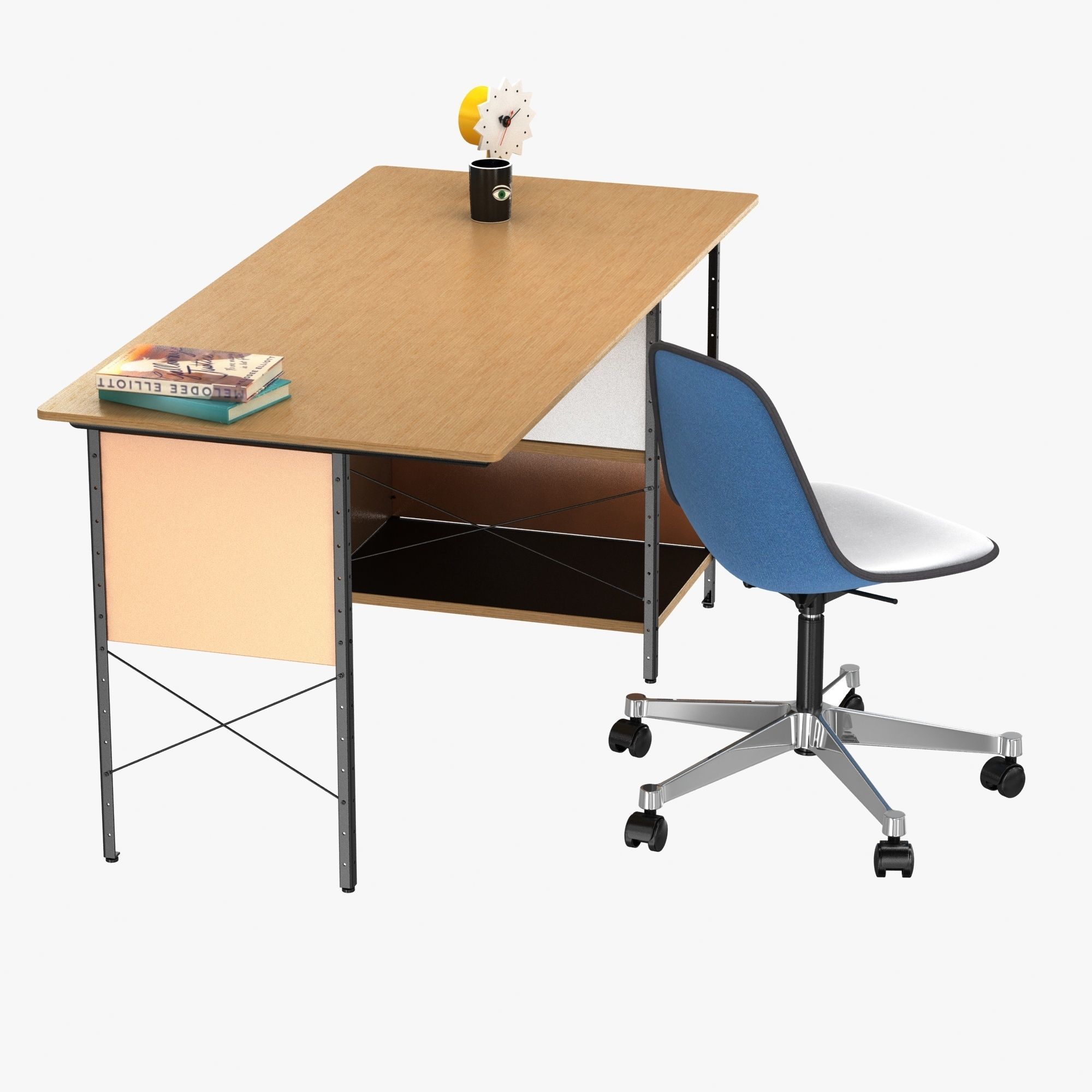
Vitra Eames plastic chair and edu desk unit 3D model
This is high poly furniture set 3d modelsRendered in vray.Stack not collapsed.Textures included.Model tested checkmate light program.3ds, fbx, obj files exported without meshsmooth modifier.
No hidden objectsAll objects grouppedAll objects have materialsNo missing textures and texture paths clearedAll objects have 1:1 scaleModel have lights and cameras , just open max file andClick render and you have same image as preview.File have gamma 1.0Unit scale cm 1:1Model optimised for rendering in 3ds max and v-ray, in other programs may adjust materials and lighting,
Eames Desk Unit EDUCharles & Ray Eames, 1949he Eames Desk Unit (EDU) was constructed by Charles and Ray Eames in accordance with the principles of industrial production. The panels function as a modesty shield and partially enclose the two storage compartments. The desk is height-adjustable to accommodate uneven floors.Table top: plywood with birch veneer (Poland and Finland).Metal surfaces: black powder-coated finish.Panels: powder-coated aluminium.Shelves: maple plywood with birch face veneer (Poland and Finland), transparent lacquer finish.Legs: individual levelling adjustment.Applications: recommended for residential use only.
Eames Plastic ChairsCharles & Ray Eames, 1950fully upholstered option Getting the most of the best to the greatest number of people for the least': with these words, Charles and Ray Eames described one of their main goals as furniture designers. None of their other designs come as close to achieving this ideal as the Plastic Chairs. For years, the designer couple explored the fundamental idea of a one-piece seat shell moulded to fit the contours of the human body. After experiments with plywood and sheet aluminium in the 1940s produce unsatisfactory results, their search for alternative materials led them to glass-fibre reinforced polyester resin.
Ceramic Clocks, Model #2George Nelson, 1953The Ceramic Clocks by George Nelson combine geometric and organic shapes in a way that is both playful and sculptural, evoking associations with three-dimensional works by artists like Constantin Brancusi or Isamu Noguchi.
Coffee Mugs - EyesAlexander Girard, 1971The designer and architect Alexander Girard created a number of restaurant interiors, for which he also developed coordinated objects and accessories. The motifs featured on the Coffee Mugs have their origins and inspiration in these rich and varied environments.
98464 polys












